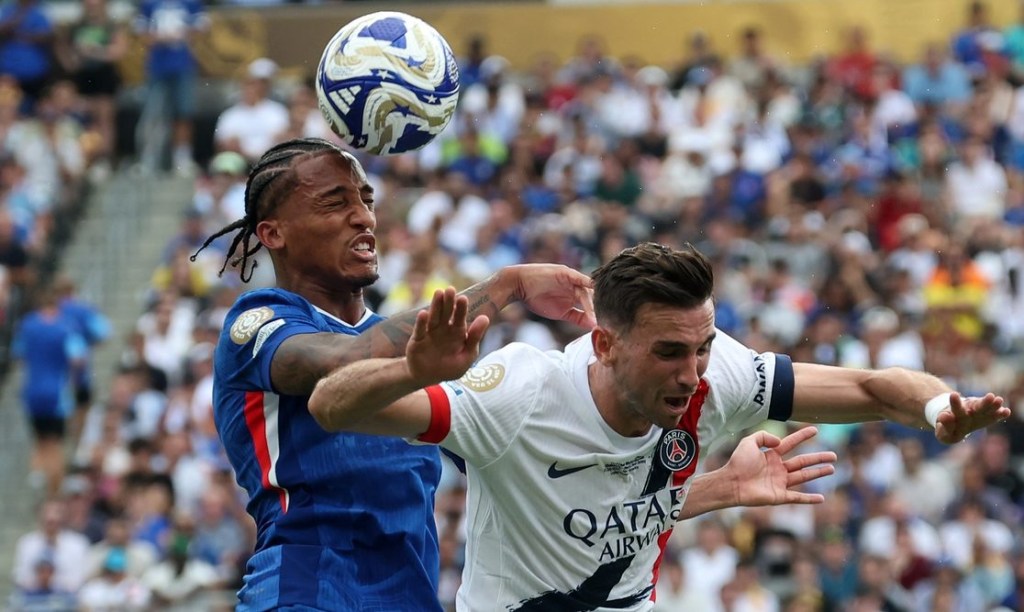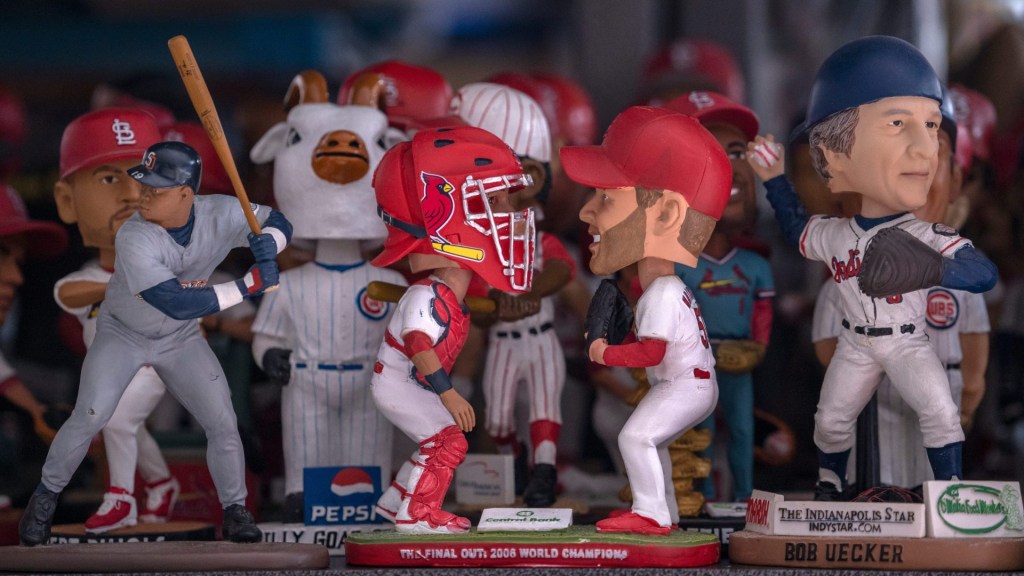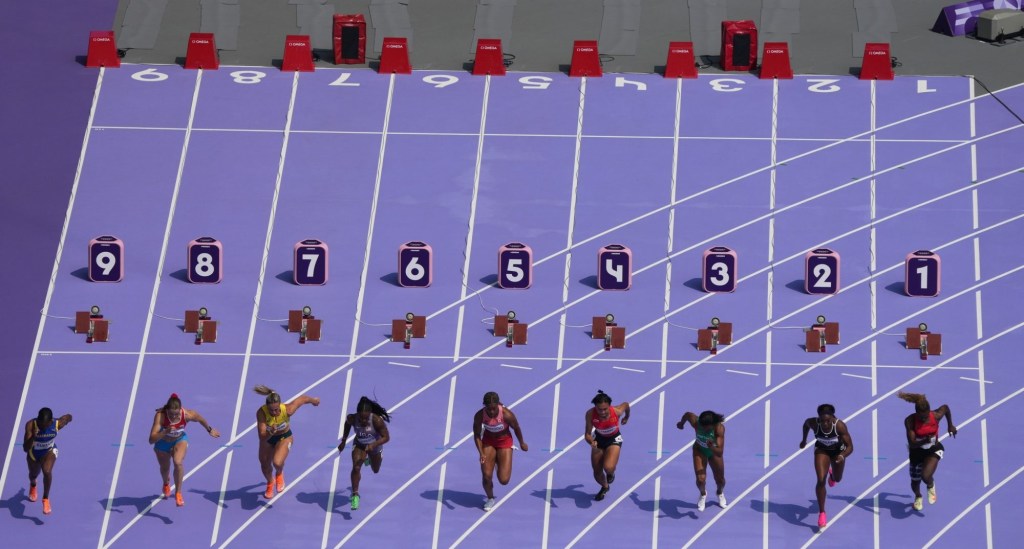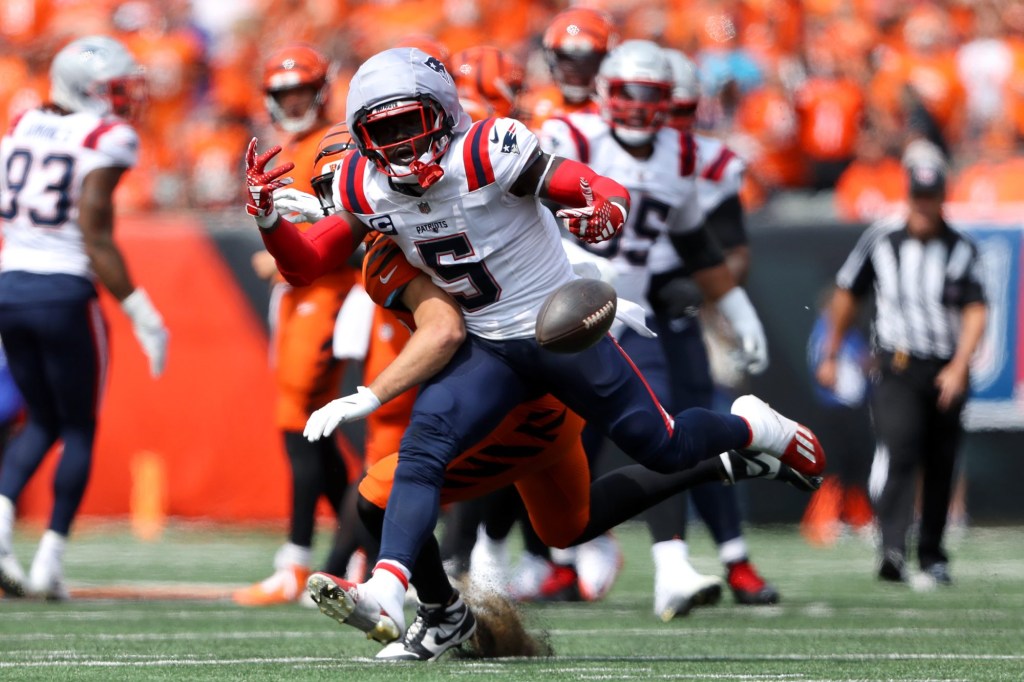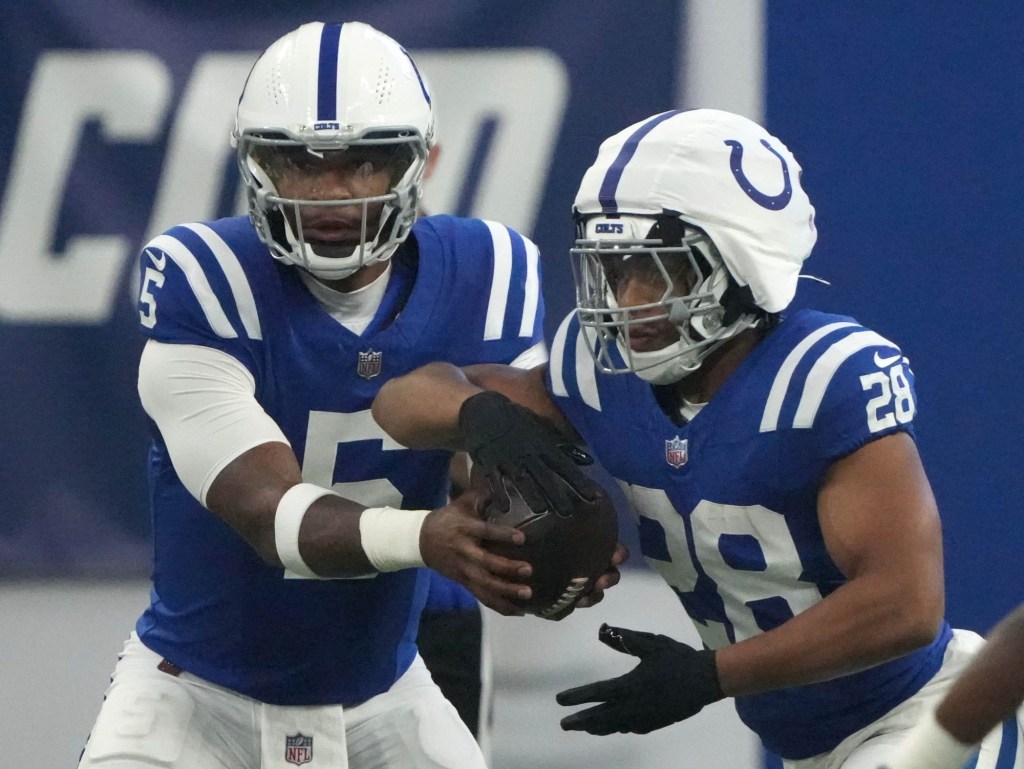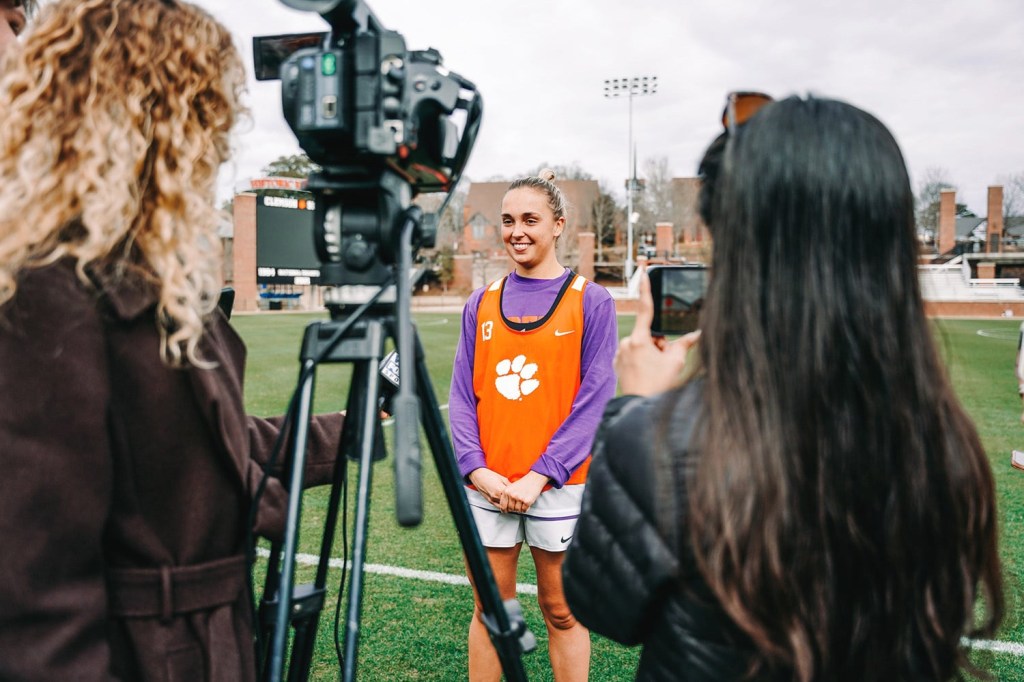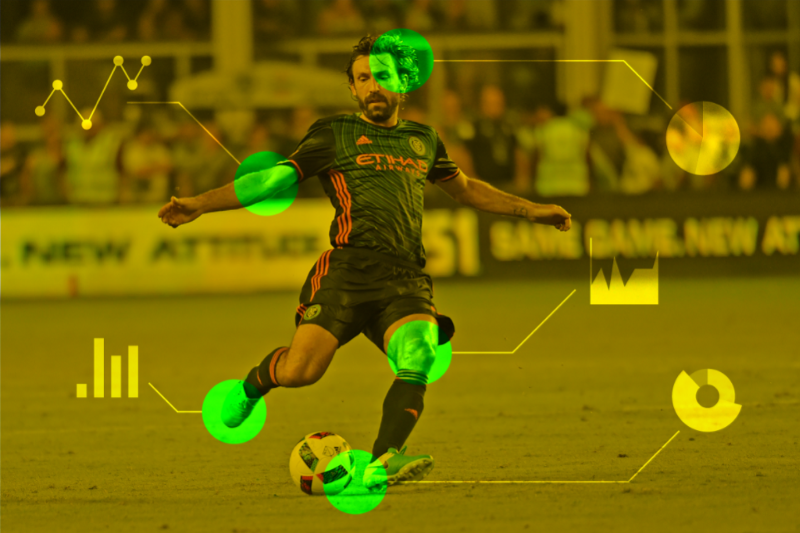

In July 2013, Perform Group, a leading global digital sports content and media group, acquired the sports data company Opta. The acquisition signaled the increasing importance of sports data to the media landscape, and its value to the evolving consumption of sports content.
Opta’s data is used by the world’s leading sports broadcasters, leagues and federations, digital media outlets, brands and sponsors. Since 2011, they have partnered with Major League Soccer (MLS), and in recent years have picked up partnerships with North American Soccer League (NASL), United Soccer Leagues (USL), National Women’s Soccer League (NWSL), and most recently, the U.S. Soccer Federation. The data can be seen by fans across each of their digital platforms and broadcast partners.
In a recent interview, Oliver Miller-Farrell, Director of North American Business Development for Perform Group’s content division, discussed with Front Office Sports the global impact of data on the game of soccer through four different areas: The introduction of data to support leagues in their efforts to develop players and win matches, supply broadcasters with compelling content, and overall, Opta helps all of its clients engage fans in meaningful ways and improve the beautiful game.
Leagues
Leagues use data in a variety of manners. From understanding their fans more accurately to measuring the level of match play, data gives leagues a barometer to base their judgment. At its essence, the performance data Opta supplies league partners supports two different categories: 1. Measuring the Quality of Play and, 2. Enhancing Consumer Engagement. In an increasingly globalized landscape, Opta’s breadth of consistent coverage across the world allows leagues to measure how they compare to other competitions in quality of play. Equally important, leagues use data to measure the entertainment value of each match, in many ways the league’s product. Match data is a key resource for clubs making important decisions. Additionally, match data is the means to further engage their core base of fans and drive new consumers, mentioned Miller-Farrell.
Drilling down to the specific uses of data varies geographically as all leagues have their own specific market driving the use and display of their data. No two audiences are the same. The American, MLS fan differs from the Italian, Serie A fan. As such, MLS may choose to display match data in an entirely different manner, often catered to a more statistically mature fan.
“The leagues here are constantly progressing in their use of data, whether it’s to better understand the intricacies of their league, or enhance the match-day experience for their fans,” discussed Miller-Farrell.
Perhaps this is because of the widespread use of data analytics in traditional American sports. MLS, along with other global leagues, examine data to ask questions like: “What makes a soccer game exciting? What engages our audience when watching the game on television or following it via a digital match-center?”
Opta services leagues like MLS by providing them with specific KPIs to help the leagues meet their respective growth strategies. This focus on data and the value it provides to leagues in understanding the performance on the pitch has subsequently led to enhanced engagement in an ever-changing consumption landscape.
Broadcasters
The introduction of performance data has not only given leagues an avenue to measure performance and enhance consumer engagement, it has driven what and how fans consume content around the match. From player analytics to daily fantasy, and outside of the U.S., betting, fans are requiring more information than years past. People are beginning to view the game of soccer at a more detailed level than the ever before. Data points give fans concrete fodder on their favorite plays and players for discussion on social media — the new watercooler. In this modern day, everyone is an expert (or at least they think they are…).
Consequently, this has resulted in a tremendous impact on broadcasters and the information they present to their audience. Consumers want data, and as a result, television broadcasts are becoming highly data-driven, taking the viewer beyond the highlight and into the fabric of the game. With this new desire for data-driven content, broadcasters are now answering the ‘why’ and ‘how’ questions. ‘How’ did N’Golo Kante win the PFA Player of the Year? ‘Why’ was he so instrumental to the Chelsea team? Despite being an award historically presented to offensive, ‘flashy’ players with past winners including Cristiano Ronaldo, Gareth Bale and Thierry Henry, the data behind Kante’s heroics simply told the story. As seen in the graphic below, Kante was a defensive machine, doing the dirty work that allowed his teammates the offensive freedom to create scoring opportunities. Kante’s ability to tackle (blue dot) and intercept passes (pink dot) contrasted with his knack for avoiding fouls (fouls committed — green dot) makes him an invaluable footballer.

The advancement of data allows broadcasters to present viewers with visuals (as seen above) and facts supporting what truly made Kante’s season so special. This data-driven content is no longer a preference, it is a requirement. For broadcasters and anchors it’s a sink or swim world, those who can adapt will rise and those who cannot will be left behind.
Teams
Now if broadcasters are able to present intricate, data-driven content to their viewers, what impact might this data have on the individual team? Aside from its value in understanding the fan, data is being used by football clubs around the globe to evaluate performance and revolutionize player recruitment.
OptaPro, a division of Opta, has been groundbreaking in providing teams with the data they seek to take their team to the next level. For recruitment, data can be used to discover players formerly unreachable. Gone are the days of relying solely on 20 different scouts spanning 15 different countries to unearth that hidden-gem signing at a cut-rate price. With soccer as globally competitive as it has ever been, teams simply cannot rely on scouting alone to source talent. OptaPro supports clubs with tools they use to discover players that make an immediate impact in their specific playing style.
“Data can be used to shortlist players across the globe that could only be evaluated by going around the world to watch all of those games,” explained Miller-Farrell. “It allows teams to utilize tailored, key performance indicators (‘KPIs’) that fit a club’s specific style and positional needs”
Through data, teams have the ability to find a like-for-like young replacement for aging or retiring players. Teams can shortlist players with similar passing, endurance and tactical characteristics to avoid disruption to their playing style.
In 2015, Arsenal signed defender, Gabriel, from Spanish side, Villareal, in an £11m deal. Although Gabriel has since joined Valencia, Arsenal’s initial transfer for the young center-half was heavily driven by the ability to use data as a reinforcement to their scouting network.
In an interview by David Hytner for the Guardian, Wenger explained, “Does [the scouting] system find players for us? That is what we look for, of course, because it is difficult to watch all the games. But what I mean is that if the numbers confirm the [scout’s] eye, it gives you more.” Furthermore, “If a [scout] comes home and says: ‘I’ve seen a good player,’ you can statistically observe this player for five, six, seven games. You send him again, he comes back and says he’s a good player‚ the numbers confirm it, you can say the risk is limited. Though there is always a risk.
In addition to recruitment, data is impacting performance evaluation, opposition scouting, and even the youth academies. Football clubs have departments specifically dedicated to analyzing performance data to enhance team success. In a March article done by Grant Wahl for SI, Atlanta United discussed their use of data analysis at the club.
“[The] use of data analytics is not only for the first team but is something we have integrated vertically throughout the academy.”
The San Jose Earthquakes have even gone as far as introducing a proprietary app for technical staff and players that includes video analysis, nutrition, communication tools and other information.
Albeit, having a treasure chest of data available at the click of a button does not guarantee success, pointed out Miller-Farrell.
“We can dump a bunch of XMLs on a team and it’s not going to do anything. At the end of the day, it’s about what questions you are asking with [the data] and [the team’s] objectives. Data is an apparatus, and to find the most value out of it, it needs to be refined.”
Fans
But how has data actually affected the fan and how are the aforementioned areas of sport using this data to engage that fan?
Through the use of data, teams across the world have seen a noticeable shift in viewership from the live, television broadcast to a new key driver, second screen viewing.
According to Miller-Farrell, “leagues, teams and broadcasters all need to comprehend what the fans are wanting now-a-days.” Each fan is consuming soccer on a myriad of screens from their television, to their iPhone, Android or tablet, but the essence is “understanding the true effectiveness of each of those screens. For example, how is the usage of a second screen on your phone enhancing the experience on the big screen?”
Data has moved teams, leagues and broadcasters to present content in ways that extend past the traditional, live broadcast. Fans want data-driven content to supplement the ‘old-school’ viewing experience. For this reason, Opta introduced Twitter platforms (the Opta ‘Twitter Family’) catered to promoting statistics and guiding media on how to utilize data for consumer engagement. For measure, since the genesis of the ‘Opta Twitter Family,’ @OptaJoe, @OptaJack, @OptaJim and @OptaFranz have collectively generated over 1m soccer followers around the world through their data-driven, direct to consumer content.
The difficulty with data at the fan level is finding the balance between data analytics and emotion. Data is purely supplemental, it was never meant to stand alone.
“Data, inevitably, can strip down emotion,” mentioned Miller-Farrell. “But it can really resonate with the fan when it’s able to trigger an emotion. That’s achieved by adding context to any data-driven point.”
In September 2015, Arsenal defender, Gabriel, was sent off following a clash with Chelsea striker, Diego Costa. The sending off had Arsenal supporters up in arms as Costa had contributed to the dismissal of Gabriel. This frustration was furthered when @OptaJoe produced a statistic showing that, despite Costa’s antics and the Gabriel red card, Costa himself had not been called for any fouls during the match.
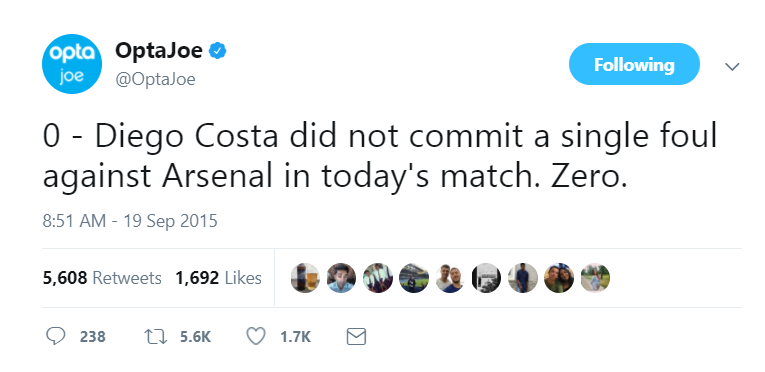
This timely use of data, combined with the sending off of Gabriel, triggered additional emotion in both side’s supporters.
This is also highlighted most recently with the David vs Goliath feat of Leicester City. Leicester City: a globally unknown team from the East Midlands that defied odds and were crowned 2015–2016 Champions of the Premier League. But how could the American truly understand the job done by the Foxes? How could the average soccer fan really comprehend the shock of Leicester’s title winning campaign in the midst of a Premier League with more money at its fingertips than ever before?
Enter: 5000–1.
The early season odds of Leicester to win the Premier League title gave the football audience a barometer to gauge the significance of such an accomplishment. It was data that quantified the accomplishment of Leicester City. It was data that supplemented the achievement and triggered the EMOTION of so many fans across the world. Standing alone, 5000–1 means little, partnered with a Premier League title, 5000–1 means everything.
Impact of Data
Although it goes without saying, data and data analytics have clearly had a global impact on the game of soccer. Data users have begun to use data to tell the whole story, or maybe, more simply, the right story. Leagues, teams, broadcasters and fans have all benefitted from its many uses. Whether it’s a league using data to measure match play and enhance fan engagement or a broadcaster leveraging data to strengthen their story. Whether it’s a team expanding their scouting capabilities or fans supplementing their viewing experience, data has resulted in unprecedented growth of the game that so many cherish around the world. Decades ago, the data capabilities of today were just a forethought, a hopeful wish not yet quantifiable. As the game begins to innovate and data capabilities are further exploited, one can only begin to imagine what tomorrow might bring. Thanks, data, and cheers to growing the beautiful game.
Front Office Sports would like to extend a thank you to Oliver Miller-Farrell and the Opta team for their contribution to this piece.
“Part of Perform Content, a division of Perform Group, Opta is the world’s leading live, detailed sports data provider. We collect, package, analyze and distribute more live data, in more detail, than anyone else. The level of detail we collect brings an added dimension to the world of sport. It allows for more innovative broadcast coverage, more engaging digital reporting and more intelligent professional analysis.”
For more information on Opta and the opportunities it can provide your organization, please get in touch through this link.
This piece has been presented to you by SMU’s Master of Science in Sport Management.
Front Office Sports is a leading multi-platform publication and industry resource that covers the intersection of business and sports.
Want to learn more, or have a story featured about you or your organization? Contact us today.
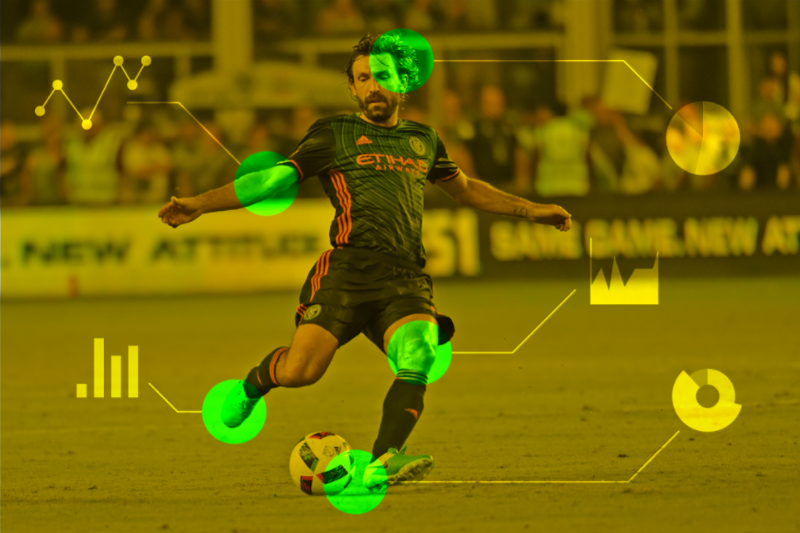
![[Subscription Customers Only] Jul 13, 2025; East Rutherford, New Jersey, USA; Chelsea FC defender Reece James (24) lifts the trophy as he celebrates with teammates as U.S. president Donald Trump after the final of the 2025 FIFA Club World Cup at MetLife Stadium.](https://frontofficesports.com/wp-content/uploads/2025/07/USATSI_26637216_168416386_lowres-scaled.jpg?quality=100&w=1024)

